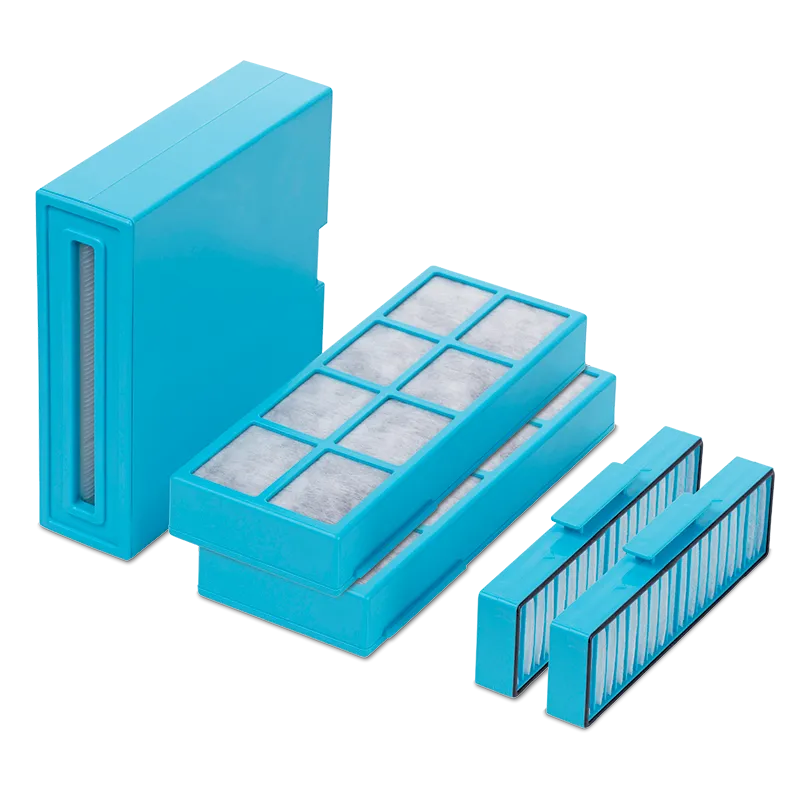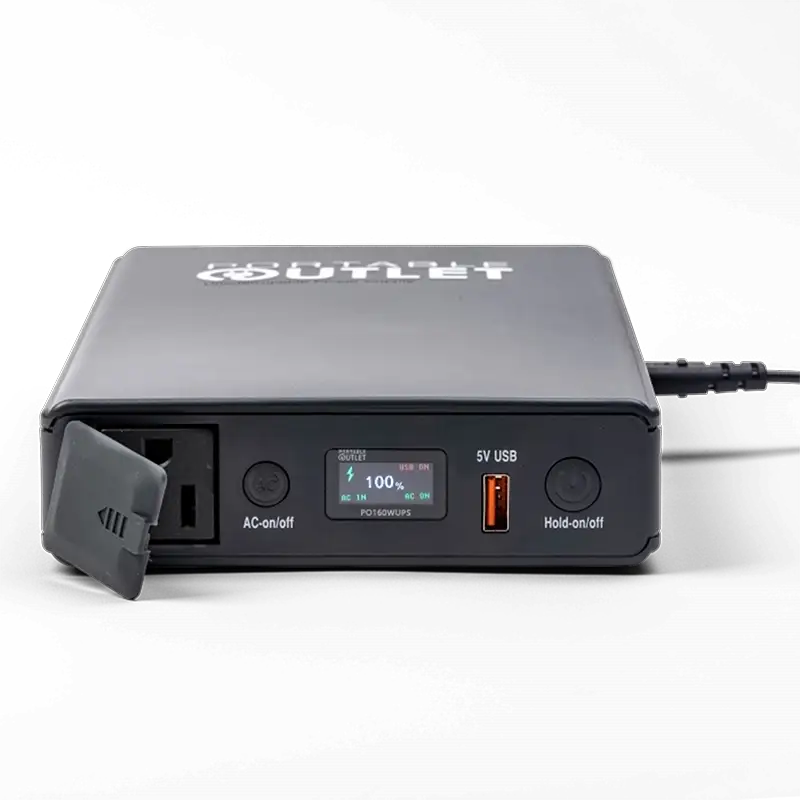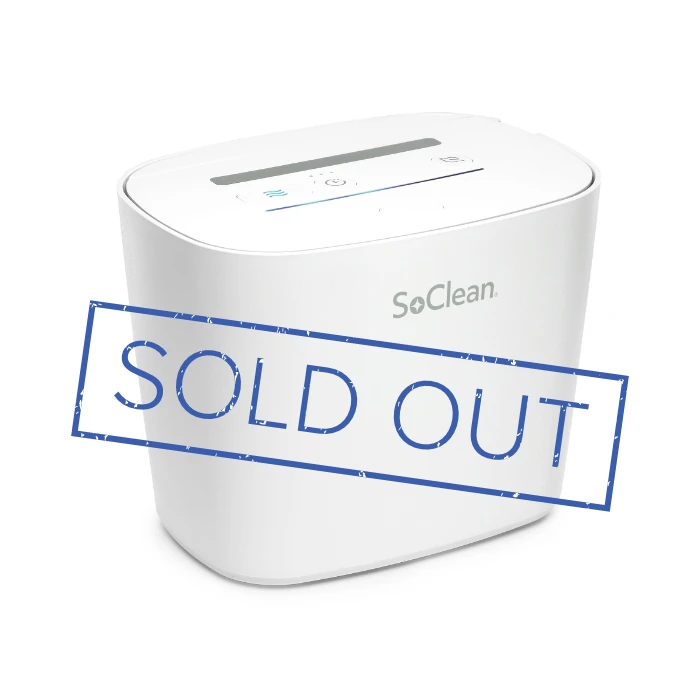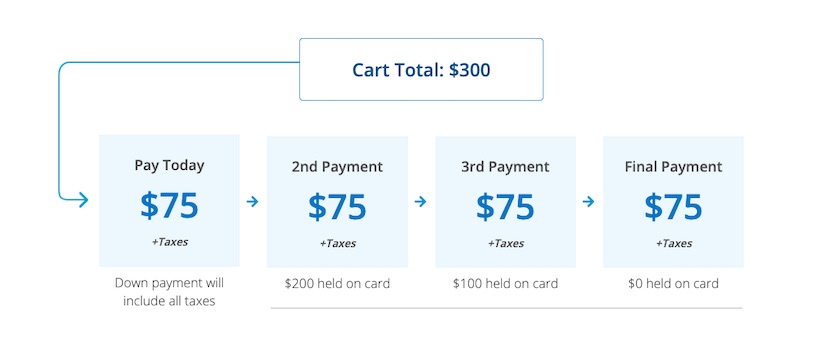Improve Air Quality
There are two main approaches for improving air quality. One method involves reducing the causes and sources of pollution. This can be done by individuals; for example, not smoking indoors or making sure not to let a car idle. Larger reductions can be achieved through government mandates, policies, and regulations. Catalytic converter laws have greatly reduced the amount of ground-level pollution in urban areas.1
The other way to improve air quality is with some type of air purification system. Rather than limit the production of pollutants, an air purifier improves air quality by removing pollutants from the air.
SoClean 3-Stage Air Purifier+
Taking Pollutants Out of the Air
Reducing sources of pollution is a worthwhile goal, but some sources of pollution may be beyond any individual’s control. For example, smoke from wildfires in the western United States2 and coastal Australia3 polluted the air for hundreds and even thousands of miles downwind from the conflagrations. The smoke particles contain a variety of particles, but the smallest ones can be the most problematic. The smallest particles remain in the air column for longer, allowing them to disperse across a larger area. Furthermore, particulate matter smaller than 2.5 microns across is able to travel deep into our lungs, and resists being cleared by our lung’s natural cleaning processes.4
A surefire method to improve the air quality in your home or workplace is with an air filtration system. An air purifier or air filter uses some type of filtration method to remove pollutants from the air. If this is done faster than pollutants can be introduced into the room being treated, the result is improved air quality.
An air purifier with a carbon filter can capture particulate matter and gaseous pollutants, removing toxins such as benzene from the air.
SoClean 3-Stage Air Purifier+
Shop NowBenefits
Improving air quality has a number of benefits. Some major pollutants cause or exacerbate health problems. High air particulate matter has been linked with lung distress, cardiovascular illness, and even dementia.5
Air purifier benefits extend to removing bacteria and viruses from the air as well. Although we are constantly exposed to pathogens like bacteria and viruses, we become infected when our immune systems become overwhelmed. Hospitals have been to reduce the prevalence of infectious pathogens like methicillin-resistant Staphylococcus aureus, MRSA, with air purifiers.6
An air filter that removes allergens such as pollen, mold, or pet dander can improve the quality of life of allergy sufferers.7 With fewer irritants such as dust mites in the air, there are fewer chances to have an allergic reaction. An air filter for allergies can go a long way to improving quality of life in the home.
More Products from SoClean
SoClean Air Purifier+ Filter Kit
$149
Portable Outlet CPAP Backup Battery V2
Save $50!
New and improved model - when the power goes out, your CPAP stays on!
Just plug the new Portable Outlet UPS between your CPAP equipment and your bedside wall socket to protect from loss of power due to storms or outages.
$349
LiquiCell Shear Points, 30 Skin Friction Protectors, Medium
Great for use anywhere skin would benefit from cushioning and protection. Ultra-thin, liquid-filled strips protect skin and stay in place.
FSA/HSA eligible LiquiCell Shear Points are latex-free, ultrathin, clear liquid-filled membranes that provide a synthetic, external cushion. It reduces painful friction by allowing an object to glide or float over the skin. Gentle skin adhesive keeps LiquiCell Shear Points securely in place overnight, while allowing easy and painless removal in the morning.
Medium, 30 per box, each 2.75" wide by 1.3" high
Also available: Small (30 per box, each 2.2" wide by 1.1" high) LiquiCell Shear Points are excellent for use on the bridge of the nose to reduce irritation from sleep equipment such as face masks.
$19.95
FAQs
The differences between indoor and outdoor air quality depends on the conditions in both spaces. In areas with significant outdoor pollution, such as industrial cities, high car-density cities, or areas affected by wildfires, the outdoor air quality may actually be worse than the indoor air quality. This is why public health bodies recommend staying indoors when outdoor air pollution is high. Alternatively, indoor sources of air pollution such as fresh paint or smokey kitchen mishaps can make the air indoors more polluted than the outdoor air.
This depends on the vacuum, and on the timeframe being assessed. Many vacuums have integrated HEPA filters, so any air drawn into the vacuum is filtered. While operating, the vacuums may actually increase the amount of airborne dust and particulates as they clean. This means that during and immediately after vacuuming, air quality may actually be reduced. In the long term, the overall reduction in dust from vacuuming may improve air quality.
If a room is occupied, an air purifier should be running in order to improve air quality for the occupants. In order to conserve energy and extend the life of any consumable filters, an air purifier may be turned off when the room is unoccupied.
The most reliable way to fix poor indoor air quality is with an air filtration system. The specially designed filter systems capture a vast number of airborne particles, a major pollutant. HEPA filters, or High Efficiency Particulate Air filters, remove over 99.97% of airborne particles that are 0.3 microns in diameter. If the indoor air is recirculated, the filtered air gets filtered again, leading to another reduction in airborne particulate.
A number of government and non-governmental bodies publish easy-to-read air quality index numbers. For example, the United States Environmental Protection Agency publishes an Air Quality Index (AQI) based on levels of various pollutants. The AQI runs from zero to 500, with zero being the least polluted air, and 500 being so high that all outdoor physical activity should be avoided.8
More Products from SoClean
SoClean 3
SoClean 3 is Sold Out. Be among the first to experience the new FDA-Cleared SoClean 3+, featuring best-in-class engineering and cutting-edge technology.
$398
Portable Outlet CPAP Backup Battery V2
Save $50!
New and improved model - when the power goes out, your CPAP stays on!
Just plug the new Portable Outlet UPS between your CPAP equipment and your bedside wall socket to protect from loss of power due to storms or outages.
$349
LiquiCell Shear Points, 30 Skin Friction Protectors, Medium
Great for use anywhere skin would benefit from cushioning and protection. Ultra-thin, liquid-filled strips protect skin and stay in place.
FSA/HSA eligible LiquiCell Shear Points are latex-free, ultrathin, clear liquid-filled membranes that provide a synthetic, external cushion. It reduces painful friction by allowing an object to glide or float over the skin. Gentle skin adhesive keeps LiquiCell Shear Points securely in place overnight, while allowing easy and painless removal in the morning.
Medium, 30 per box, each 2.75" wide by 1.3" high
Also available: Small (30 per box, each 2.2" wide by 1.1" high) LiquiCell Shear Points are excellent for use on the bridge of the nose to reduce irritation from sleep equipment such as face masks.
$19.95
Why SoClean
Keep your home fresh and SoClean with the SoClean 3-Stage Air Purifier+. Up to 3,000 times more efficient than HEPA standards, the SoClean 3-Stage Air Purifier+ captures particles down to 10 nanometers and generates cleanroom-level clean air for your home. The easy-to-use design makes it simple to produce quality air wherever you are.
Master Air Purifier Sources:
Air quality sources: Air purification/filtration process sources: HEPA, UPLA, and MERV filter sources:
https://www.smu.edu.sg/sites/default/files/economics/shea2014/presentation/pollution_talk_april_2014_ham2.pdf
https://www.airnow.gov/aqi/aqi-basics/
https://www.ncbi.nlm.nih.gov/pmc/articles/PMC4484965/
https://www.sciencedirect.com/science/article/abs/pii/S0048969701007653
https://www.cfp.ca/content/57/8/881/tab-figures-datad1
https://ehp.niehs.nih.gov/doi/full/10.1289/ehp.1002255
https://www.gotopac.com/art-cr-iso-cleanroom-classifications
https://www.researchgate.net/publication/316472615_A_review_of_air_filtration_technologies_for_sustainable_and_healthy_building_ventilation
https://www.epa.gov/indoor-air-quality-iaq
https://www.airnow.gov/sites/default/files/2020-05/aqi-technical-assistance-document-sept2018.pdf
https://www.health.ny.gov/environmental/indoors/air/pmq_a.htm#:~:text=Exposure%20to%20fine%20particles%20can,as%20asthma%20and%20heart%20disease
https://www.epa.gov/sites/production/files/2018-07/documents/residential_air_cleaners_-_a_technical_summary_3rd_edition.pdf
https://www.ncbi.nlm.nih.gov/pmc/articles/PMC6272289/
https://link.springer.com/article/10.1007%2Fs100220100046
https://www.kompareit.com/homeandgarden/hvac-compare-central-air-cleaner-cost.html
https://www.chemviron.eu/products/activated-carbon/
https://www.who.int/occupational_health/publications/en/oehairbornedust3.pdf
https://academic.oup.com/jimb/article/32/7/319/5992784?login=true
https://www.cabotcorp.com/solutions/products-plus/activated-carbon
https://www.sciencedirect.com/science/article/abs/pii/S009167499970391X
https://www.tandfonline.com/doi/full/10.3109/02770903.2014.895011
https://www.ashrae.org/file%20library/about/position%20documents/filtration-and-air-cleaning-pd.pdf
https://www.britannica.com/science/human-respiratory-system/The-mechanics-of-breathing
https://www.epa.gov/pm-pollution/particulate-matter-pm-basics
https://www.merriam-webster.com/dictionary/HEPA
https://www.standards.doe.gov/standards-documents/3000/3020-astd-2015
https://www.standards.doe.gov/standards-documents/3000/3020-astd-2015/@@images/file
https://www.sciencedirect.com/science/article/abs/pii/S0195670105005074
https://www.ncbi.nlm.nih.gov/pmc/articles/PMC1477932/
https://pediatrics.aappublications.org/content/127/1/93.short
https://www.tandfonline.com/doi/full/10.1080/02786820500191348
https://www.sciencedirect.com/science/article/abs/pii/0360128583900023
https://onlinelibrary.wiley.com/doi/abs/10.1002/ajim.4700270302
https://www.laboratory-supply.net/blog/difference-between-a-hepa-and-ulpa-filter/
https://www.sciencedirect.com/science/article/abs/pii/S0360132320305588
https://www.karger.com/Article/Abstract/151502
https://www.grainger.com/know-how/equipment-information/kh-what-is-merv-rating-air-filter-rating-chart
https://www3.epa.gov/ttn/catc/dir1/ff-hepa.pdf
https://www.epa.gov/indoor-air-quality-iaq/what-merv-rating-1
ttp://gttlab.com/uploads/soft/161025/EN1822-5-2009Highefficiencyairfilters(EPA,HEPAandULPA)Part5Determiningtheefficiencyoffilterelements.pdf
Sources:
- https://www.researchgate.net/profile/A-Mohiuddin/publication/242492401_Experimental_analysis_and_comparison_of_performance_characteristics_of_catalytic_converters_including_simulation/links/00463538707f42a4dc000000/Experimental-analysis-and-comparison-of-performance-characteristics-of-catalytic-converters-including-simulation.pdf
- https://apnews.com/article/climate-climate-change-san-diego-health-wildfires-387f17ec8658335a7da5b9fe81c65abc
- theguardian.com/environment/ng-interactive/2020/feb/20/the-toxic-air-we-breathe-the-health-crisis-from-australias-bushfires
- https://www.health.ny.gov/environmental/indoors/air/pmq_a.htm#:~:text=Exposure%20to%20fine%20particles%20can,as%20asthma%20and%20heart%20disease.
- https://bmjopen.bmj.com/content/8/9/e022404.abstract
- https://pubmed.ncbi.nlm.nih.gov/16517004/
- https://www.tandfonline.com/doi/full/10.3109/02770903.2014.895011
- https://www.airnow.gov/aqi/aqi-basics/











